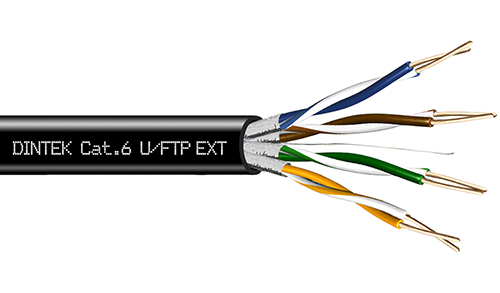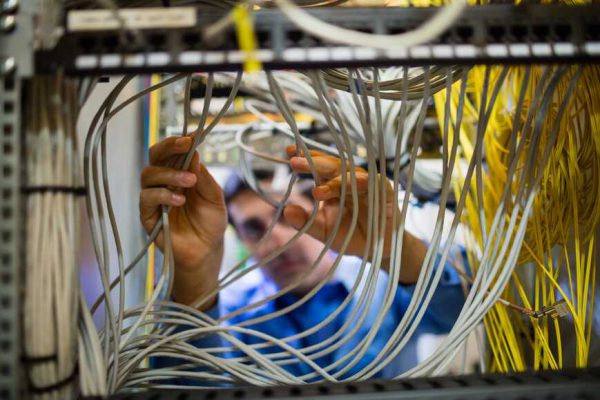You use Ethernet cables to connect your network equipment. There are various types of network cables available, each with their own specifications. But what are the differences between a UTP and FTP cable? And which one should you choose? Read about it in this article!
What is a UTP cable?
UTP stands for Unshielded Twisted Pair and is a network cable consisting of multiple unshielded, twisted wires in a thermoplastic sheath. UTP cables are used to transmit data within networks, for example, internet connections or connections between devices. It is the most popular and widely used network cable and is also known as an Ethernet cable.
What is an FTP cable?
FTP stands for Foiled Twisted Pair and is very similar to a UTP cable, but unlike a UTP cable, the twisted wire pairs are surrounded by (aluminum) foil (a “shield”). This foil provides better protection against interference between the wire pairs.
Ultimate protection with an S/FTP cable
An S/FTP cable is a type of cable that offers the ultimate protection. In addition to the shielded wire pairs, the cable as a whole is also shielded with braiding. This cable offers the highest protection against electromagnetic interference (EMI) and crosstalk.
Choosing the right cable
In many cases, a standard U/UTP cable is sufficient. However, there are situations in which a different type of cable offers advantages.
The use of U/FTP cables is recommended when the maximum performance must be obtained from the cable, even over longer distances. The signals passing through the different wire pairs remain better separated from each other because the pairs are shielded from each other. An additional advantage is that this shielding also offers some protection against influences from outside the cable.
An FTP cable offers better protection against interference between the wire pairs. When the maximum throughput of a cable is required, even over long(er) distances, an FTP cable can have a positive effect on the throughput. In addition, an FTP cable also offers some protection against external interference.
When a cable needs to be installed in situations where there are many external sources of interference, it is advisable to use a Shielded (S/xTP) cable. Examples of external sources of interference are heavy electric motors and DC cables. These can generate an EMF (electromagnetic field) that affects the signal in the cable. An S/FTP (mutually shielded wire pairs and cable shielded with braiding) provides optimal protection.

Different categories
Network cables are available in different categories, each with their own maximum speed. We offer CAT6 and CAT6a cables. Suitable for intensive data traffic, even over longer distances.
DINTEK training
Would you like to learn more about network cables and the factors that determine cable quality and ultimately signal quality? We invite you to participate in one of our DINTEK training courses. Send us a message to let us know you would like to participate in this training course. We will contact you as soon as the next training date is known.
Choosing the right network cable
Not sure which type of cable is right for your situation? No problem! We are happy to provide professional advice. Please contact us using the contact form on our website.
More news

Pigtails, why are they essential in fiber optic installations?
Pigtail connectors spelen een belangrijke rol in glasvezelinstallaties. Maar wat is een pigtail precies en waarom gebruik je dit? We leggen in dit artikel uit waarom ze belangrijk zijn...
Essential tools for network professionals
A strong network starts with the right tools. For network professionals, accuracy, speed, and reliability are essential when installing, testing, and maintaining cabling. We have listed all the important...
What is a DIN rail and how can you use it effectively in your installation?
Do you work in industry and installation technology? Then you know that a DIN rail is indispensable! Almost every meter cupboard or rainwater installation contains a DIN rail. Are...
New: DTF-03 Optical Fusion Splicer
DINTEK introduces a new fiberglass welding device, the DTF-03 optical fusion splicer. This compact device offers one of the fastest welding and heating times.
New: DCT-010 cable and PoE tester
DINTEK launches the DCT-010, a compact and rugged cable and PoE tester that helps network professionals efficiently and accurately test RJ11 and RJ45 cables.